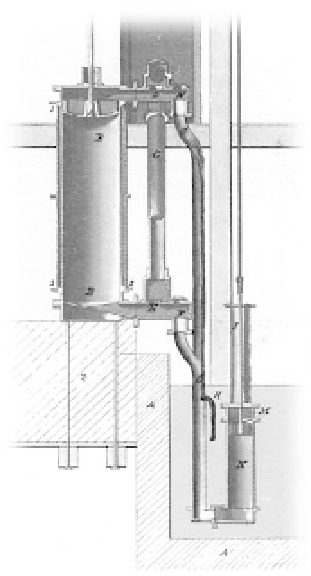Environmental Engineering Reference
In-Depth Information
8.8 Watt's steam engine with its separate condenser (Farey
1827). (b) Efficiencies of the best steam engines, 1700-1930
(Smil 1994).
Stationary uses ranged from sawing wood and stones
to powering the belt drives in factories, from compress-
ing air to driving the first electricity generators. Its
kinetic uses revolutionized both land and waterborne
transport with railways and steamships. Other mobile
applications included heavy self-propelled engines,
cranes, pile drives, hammers, fire engines, tractors, trucks,
cable ploughs, and steamrollers. The lightest steam en-
gine was built by Sir Hiram Maxim in 1894 to power
his never-flown airplane (Gunston 1986); it weighed a
mere 1.04 g/W, and with a boiler 4.09 g/W, lighter
than contemporary internal combustion engines. Large-
scale manufacture of steam engines led to improved
machining and integrated design practices that served as
foundations of twentieth-century engineering advances.
The availability of such concentrated power changed in-
dustrial production and transportation. Both transforma-
tions were soon reflected in extensive urbanization,
migration, growth of trade, and shifts in international
relations. However, British data show that to relate
nineteenth-century economic growth primarily to steam
is misconceived (Crafts and Mills 2004).







































